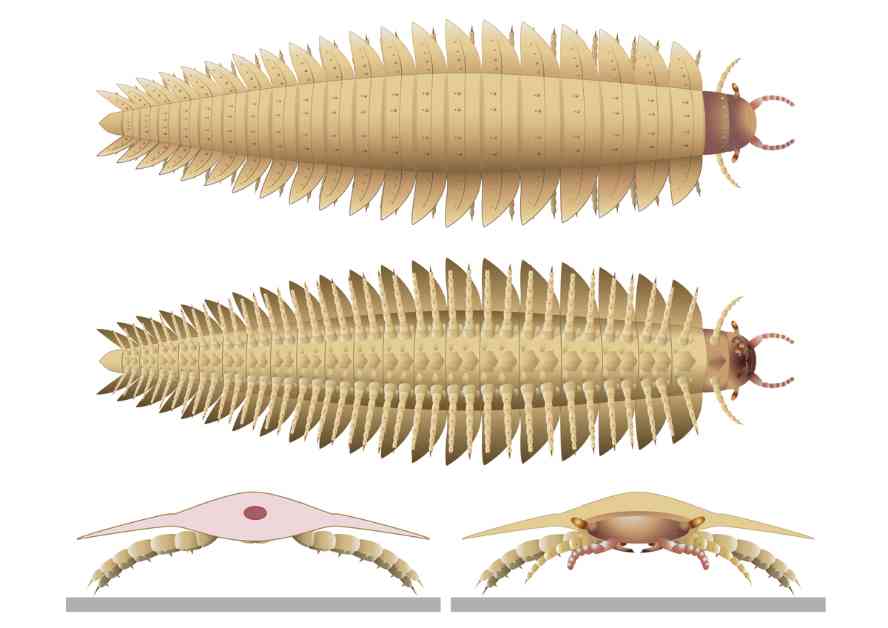The recently discovered head of a car-sized, millipede-like arthropod, known as Arthropleura, has shed light on an evolutionary mystery that has puzzled scientists for years. This massive creature lived between 346 million and 290 million years ago during the late Paleozoic era, reaching lengths of up to 8.5 feet and weighing over 100 pounds.
For centuries, paleontologists have been searching for a complete head of Arthropleura to better understand its evolutionary relationship to modern arthropods like millipedes and centipedes. The recent discovery of two well-preserved fossils with intact heads has provided valuable insights into the creature’s anatomy and position in the evolutionary tree.
The CT scans of the fossilized heads revealed unique features such as stalked eyes, curved antennae, and centipede-like mandibles, creating a mix of characteristics from both millipedes and centipedes. These findings have helped scientists determine that Arthropleura is most closely related to the millipede family, despite the presence of stalked eyes, which are typically found in aquatic animals.
The presence of stalked eyes on juvenile Arthropleura suggests that these creatures may have spent part of their early life stages in water before transitioning to a terrestrial lifestyle as adults. This discovery has raised new questions about the evolutionary history and behavior of Arthropleura, adding to the ongoing debate among paleontologists.
Overall, the completion of the Arthropleura head has provided valuable insights into the evolutionary history of these ancient arthropods and has sparked new avenues of research into their unique features and adaptations. The study of these fascinating creatures continues to unravel the mysteries of the prehistoric world and shed light on the complex relationships between different species throughout Earth’s history.










